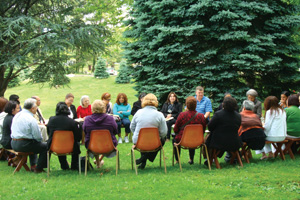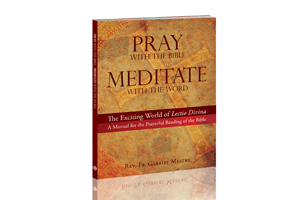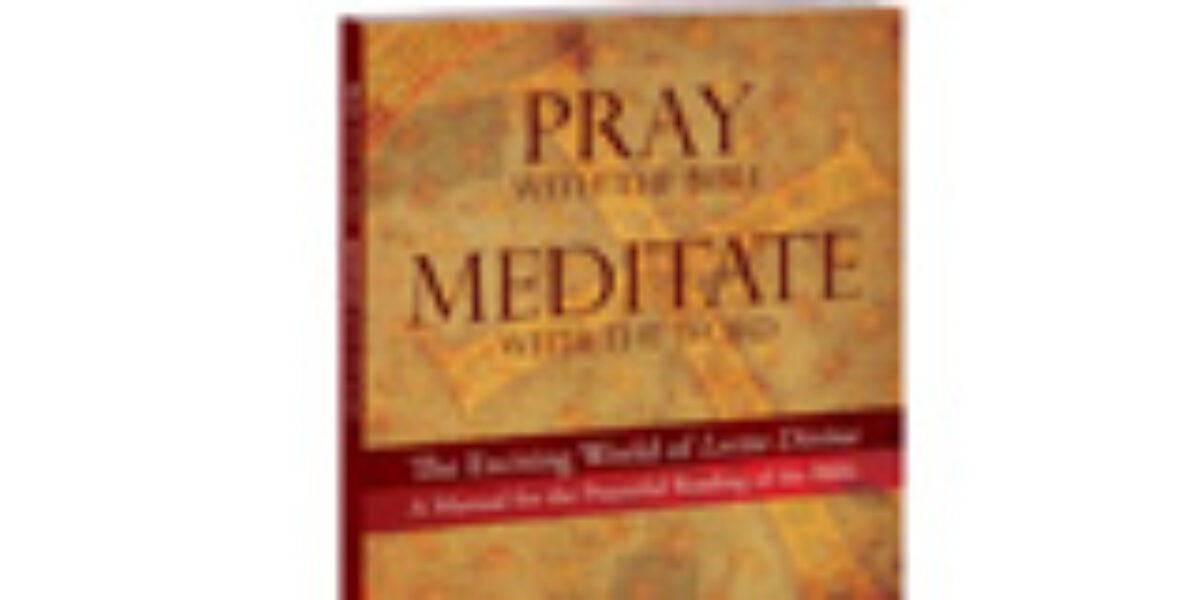
“To get the full flavor of an herb, it must be pressed between the fingers. So it is the same with the Scriptures; the more familiar they become, the more they reveal their hidden treasures and yield their indescribable riches.” St. John Chrysostom, a.d. 347-407
As a devout Catholic, I admit I have a tough time reciting Scripture verses. It seems I'm not alone.
A recent Rasmussen Reports poll confirms that Catholics know little about the Bible and rarely read it.
What can be done to get us back to the Word of God? The answer lies in two Latin words: lectio divina.
Lectio divina is a slow, contemplative praying of the Scriptures so that the Bible — the living Word of God — becomes a means of union with the Holy One. This ancient and powerful form of praying with Scripture began around a.d. 220 and was practiced by Catholic monks, especially the monastic rules of Sts. Pachomius, Augustine, Basil and Benedict.
Centrality of the Bible
God's Word is crucial to the life of the Catholic Church. In fact, the last two Popes — the late Pope John Paul II and the current pontiff, Pope Benedict XVI — have called its flock to go back to sacred Scripture. American Bible Society is helping the Catholic Church respond to that call.
“Our mission is the Word of God,” says Mario Paredes, presidential liaison to the Roman Catholic Ministry at ABS. “We join in partnership with the Catholic Church and are presenting lectio divina as our flagship program serving Catholics nationwide.”
Indeed, Pope Benedict solidly supports lectio divina. In a 2005 speech, he recommended this ancient method of prayer: “The diligent reading of sacred Scripture accompanied by prayer brings about that intimate dialogue in which the person reading hears God who is speaking, and in praying, responds to him with trusting openness of heart.”
In the nearly 500 years following the Reformation, Catholics were divorced from the Bible, says Paredes. As a result, they did not have a healthy understanding of God's Word, the effects of which are still being felt today. This is a problem for one simple reason.
“Not knowing the Bible is ignorance of Christ,” says Paredes, quoting St. Jerome. “The entire Bible points to one single reality, the person
of Jesus.”

Into the Heart of God
Lectio divina, says Paredes, bears great fruit. “Meeting Jesus in the Word produces an excitement, joy and happiness because people are speaking with the Lord.”
Indeed, Sister Veronica Gross, RSM, has seen the fruit of lectio divina in her home parish of Mother of Divine Providence in King of Prussia, Pa.
About three years ago, the parish had hosted various speakers to discuss different forms of spirituality with parishioners. Of approaches, the people liked lectio divina the best, says Sr. Veronica. “They were actually able to do it. It was manageable, and people realized that Scripture is approachable,” says Sr. Veronica, who belongs to the order of the Sisters of Mercy. “We call the Scripture the living Word of God,” she adds. “Lectio divina meets people where they are. It's so personal, and that's the beauty of it.”
As part of its Roman Catholic ministry, ABS will continue to meet with bishops of various diocese to discuss lectio divina. ABS also will debut a manual, Pray with the Bible, to introduce English- and Spanish-speaking Catholics to lectio divina. During retreats, ABS will use the manual to train people in this method. They will then take their knowledge of lectio divina and share it with their fellow parishioners. Using this approach, ABS hopes to touch at least 200,000 people a year.
Although lectio divina has its roots in the monastic tradition, this method of prayer is for all Christians. “It's a beautiful way to bring you right into the heart of God,” says Paredes.
Four Steps Anchor the Lectio Divina Method
1. Lectio. This reading of Scripture is different from the speed reading that many modern Christians apply to newspapers, books and even to the Bible. Using lectio divina, people read a Scripture passage slowly and attentively, attuned to hear a word or phrase that captures their attention.
2. Meditatio. Once readers find a word or phrase in the Scriptures that speaks to them, they think about it and ponder it. They memorize it, gently repeat it and allow the words to interact with their thoughts, hopes, memories and desires. Through meditatio, God's Word becomes his Word for participants — a word that touches them at the deepest levels.
3. Oratio. This third step is prayer, understood as dialogue with God, a loving conversation with the one who invites participants into his embrace. During this step, people allow the Word they've taken in to touch their hearts.
4. Contemplatio. In this final step, participants simply rest in the presence of the one who, through his Word, invites them to accept his transforming embrace. Practicing silence, they enjoy the experience of simply being in the presence of God.





